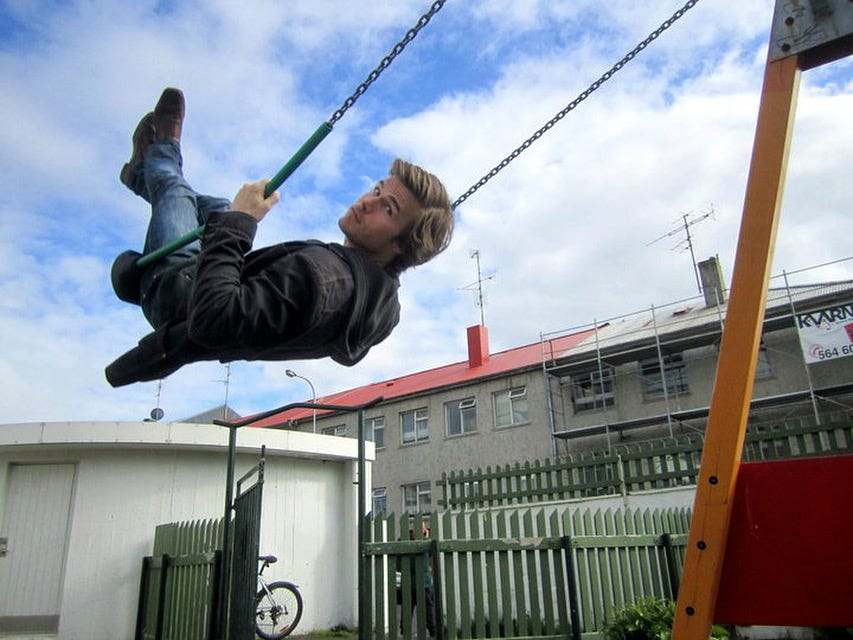Social Tangles
August 2, 2023
Current location: Milwaukee, Wisconsin, USA
Reading: The Heat Will Kill You First by Jeff Goodell
Listening: Room Service by Holly Humberstone(if you have a moment, reply with your own 3-item status via email or in the comments)
Social Tangles
For about a decade-and-a-half, beginning just after the arrival of smartphones in everyone's pockets and the subsequent deployment of social media platforms on those devices, we've benefitted and suffered from shared, digital social spaces.
As with most things, the fruits of these networks have been unevenly distributed, as have the many downsides.
For most people, though, these spaces—the Facebooks, the Twitters, the TikToks and Snapchats and YouTubes of the world—have been generally neutral, ever-present entertainment and media hubs.
They're where we RSVP for events and wish each other happy birthday, and they're where we share major milestones, bemoan political scandals, and watch short-form prank videos.
For others, though, they’re a means of influencing the conversation, earning an income, and/or connecting with the only social groups they’ve ever really clicked with.
Whatever their personal utility, these platforms have become vital to many of us, and they’re in the midst of a grand rewiring—a simultaneous tangling and disentangling—that could tweak their value-propositions and thus, the role they play in our lives.
Probably the most overt evolution in this space is taking place within Twitter, which has recently been renamed X and which, depending on who you ask, is being ham-handedly managed into the ground, intentionally guided toward bankruptcy (to erase a multi-billion-dollar debt-load), or bravely reshaped into something so future-facing most of us can’t see that brilliance for what it is, yet.
Those changes, however they’re framed, have triggered an exodus of some of its most influential figures (including politicians, journalists, and brands), and that outflow has goosed the populations of competing networks like Mastodon and Bluesky, and reportedly led to the rapid and well-timed release of Meta-owned competitor Threads, which—at the moment at least—is positioning itself as a Twitter-alternative that, theme park-like, will keep the real-world at bay so that all on-platform conversations remain brand-safe (the better to keep people engaging and to sell ads).
Parallel to that fracturing of one of the (until just now) most influential social networks, we’re also seeing a homogenization of network offerings.
Many of the largest social platforms are copying every other platform, to the point where you’d be hard-pressed to find one that doesn’t have a Snapchat-like “stories” feature, Twitter-like text updates, some kind of short-form, vertical video tool, and on and on and on.
That’s an oversimplification, of course, and there are platforms that defy this pattern of copy-pasted features.
Most networks are barely differentiated versions of all the other networks these days, though, either in the sense that they’re Twitter-clones, or in the sense that they’re awkward piles of other networks’ feature-sets, cobbled together into an off-putting, misproportioned chimera.
None of which matters to most people, at least superficially, and at least so far.
Most of us will continue to use Facebook to communicate with our older family members and remember birthdays, will periodically check in with Twitter to see which politician said what dumb thing, will post and heart thirst-traps on Instagram, and will YouTube and TikTok endless torrents of transitory entertainments.
But the lack of coherent, Schelling point-like collective spaces for temporal conversations, history-making moments, and shared memetic touchpoints (something Twitter, for all its flaws, has served as for the past decade) could reduce our capacity for encountering and engaging with people and ideas that don’t agree with our existing conception of things.
The emergence of so many alternative networks, then, is positive in a competitive, evolutionary sense—more opportunity for potentially valuable mutations!—but far less ideal in terms of cultural cross-pollination, as each group can simply flee to their own ideology/tribe/allegiance-flavored version of Twitter/YouTube/etc when they encounter something or someone they don’t like.
Parallel to that untangling, the blending of all possible tools into a sort of bland, beige feature-set could make it more difficult for niche networks offering alternative ideas and mechanics to establish the toeholds required to achieve sustainable scale—the handful of contemporary copycat juggernauts leaving insufficient oxygen for any other players to reach mainstream-scale significance.
Nothing is static, everything changes, and this period of upheaval will ultimately lead to new standards and paradigms, which is a normal, necessary, and neutral process, even if these changes will be more negatively or positively valenced for some of us in the short-term, depending on our relationship with and dependency on all those outgoing norms.
If you found value in this essay, consider buying me a coffee or becoming a paid subscriber :)
Video Essay
This week’s video essay is a riff on last week’s newsletter essay, though I expound a bit more on some of the ideas and have made it all more visual (hopefully in such a way that it encourages more mini-vacationing).
Likes, shares, and subscribes are very much appreciated, and if you have a question you’d like me to answer in a future video, drop me a YouTube comment or email :)
Interesting & Useful
The Most Popular Video Streaming Service by Country
“With the highest number of subscribers in 78 countries and over 220 million customers globally, Netflix was the most popular video streaming service in the most countries.”
“We offered three datasets on past, present, and future of nations and societies, then asked the community to creatively visualize new perspectives and stories.”
Meander the Halls of Europe’s Grandest Homes in Gretchen Scherer’s Paradisiacal Paintings
“Scherer began incorporating architecture into her work around ten years ago when a friend gifted her a book about the genre’s history. She was increasingly drawn to more ornamental styles that preceded the clean lines of 20th-century modernism. “I like the references to nature and all the adornments,” she says. “Those [older] places feel so alien to the spaces we inhabit now—it’s truly like another world.” The spaces are always empty of human visitors, but their presence is felt as if they could walk back into the room at any moment.”

Something Else I Wrote
Outro
Today’s essay was long-ish, so I’ll keep this brief.
I’m hoping to build-out my presence on YouTube (as I rethink how I engage with all these tangled and disentangling platforms), so if you dig what I’m doing there please consider liking, sharing, commenting, and otherwise engaging-with my work so that the YT robots take notice.
Also, please let me know if you notice room for improvement or have ideas for other things I might do over there, as I’m still figuring out that aspect of my work, and would love your insights :)
Thanks for your support and feedback!
How’re things going in your neck of the woods? What have you been up to, lately? Reply directly to this newsletter or send an email to colin@exilelifestyle.com and tell me your thoughts—I respond to every message I receive and would love to hear from you!
Prefer stamps and paper? Send me a letter, postcard, or some other physical communication at: Colin Wright, PO Box 11442, Milwaukee, WI 53211
Or hit me up via the usual methods: Instagram/Threads, Twitter (X? I don’t even know what we’re doing anymore), Facebook, YouTube, or list of map projections.



